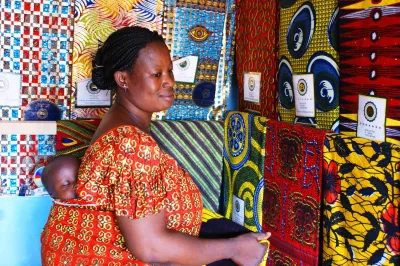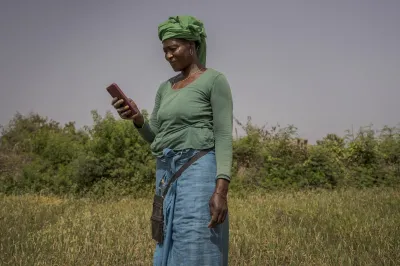3 Ways to Elevate the Consumer Voice in Financial Regulation
Understanding and protecting consumers, especially those who are the most vulnerable to shocks, has become more urgent than ever during COVID-19. In the past few years, we have seen an increase in the occurrence of consumer risks, especially with digital finance. Many countries have adopted consumer protection regulations, but few have given consumers much of a say in the process. This is regrettable because engaging people in regulations that affect them usually makes regulations more impactful.
For this reason, CGAP recently published a paper that identifies promising ways for policy makers and funders to elevate the “collective consumer voice” — that is, ways that policy makers and funders can enable consumers to communicate their needs and concerns as a group, improving the odds that their voices will be heard and integrated.
Based on this research, below are three opportunities to elevate the collective consumer voice, along with the roles that regulators and funders can play.
1. Empower consumer groups to represent consumer interests to regulators

Consumer associations and other grassroot organizations can significantly influence financial consumer protection regulations. In Russia, KONFOP — a confederation of consumer associations — used mystery shopping to uncover discrimination against loan insurance applicants who were pregnant or living with HIV. Based on these findings, it helped authorities to strengthen anti-discrimination regulations. Similarly, the Indonesian Consumer Foundation influenced efforts to address e-commerce-related fraud by commenting on draft regulations.
A recent Consumers International report details the many ways that consumer associations can protect consumers. These associations would benefit from the support of international funders. There is a particular need to help build associations' technical capacity for assessing digital finance risks and identifying sustainable funding sources. Funders can also ensure they consult consumer group representatives when designing regulatory and policy projects with government counterparts.
2. Create more forums for regulators to listen to consumers
It is beneficial for regulators to listen to customers when developing regulations, whether on an ad hoc basis or in a more regular way. Engaging in public consultations can be a good way of getting ad hoc input. For example, the Indian government held in-person consultation events on its data privacy bill. Likewise, the Bank of Sierra Leone held a regional event to discuss key provisions of its consumer protection regulation with consumers.
In other cases, mostly in OECD countries, regulators have created formal, in-house consultative bodies that include consumer representatives and other stakeholders. In Australia, the Financial Complaints Authority (AFCA) has created a consumer panel in which vulnerable communities have a say. The UK’s Financial Services Consumer Panel, hosted by the Financial Conduct Authority (FCA), has helped authorities to uncover irresponsible lending practices based on anecdotes shared by members.
International funders can play a significant role in facilitating — and, in some cases, funding — both ad hoc and formal consultative structures. They can also involve consumer representatives or set up formal consumer panels when designing their own policy and regulatory projects.
3. Leverage technology to connect consumers and regulators
More than half of the people who live in low- and middle-income countries use social media, according to Pew research from 2018. There is an opportunity for supervisors to use suptech to monitor complaints that appear on these platforms and for regulators to adapt regulations based on what they find.
While uncommon for regulators use social media in an interactive manner, there are a few cases. In the Philippines, Bangko Sentral ng Pilipinas (BSP) has launched a chatbot that enables consumers to file complaints using SMS or Facebook Messenger. BSP uses machine learning and language processing to manage these complaints. It has already used the information in its regulations to protect consumers.
But many customers, especially vulnerable ones, don’t have internet. In these cases, regulators and consumer groups can still use technology to listen to customers. In India, Mobile Vaani is an interactive voice response (IVR) technology platform that works on basic phones. The platform collects and collates testimonials from low-income segments and shares them with local policy makers.
Suptech presents many challenges in developing countries where regulators have limited technical capacity. International funders can provide local associations and advocacy groups with funds for training programs in how use these technologies. They can also help supervisors to develop consumer protection suptech and interactive social media channels to communicate with consumers.
Our next steps
CGAP plans to continue working to improve the collective consumer voice with international funders and regulators by focusing on these opportunities. We plan to pilot solutions with consumer associations as part of this effort, in collaboration with Consumers International as well as regulators and supervisors in Peru, the U.K. and South Africa. We will share our learnings in forthcoming blogs and reports.
Resources
Consumer associations can play an important role in improving consumer protection in low- and middle-income countries. This report by Consumers International was supported by CGAP as part of an effort to “elevate the collective consumer voice” in financial regulation.




Add new comment